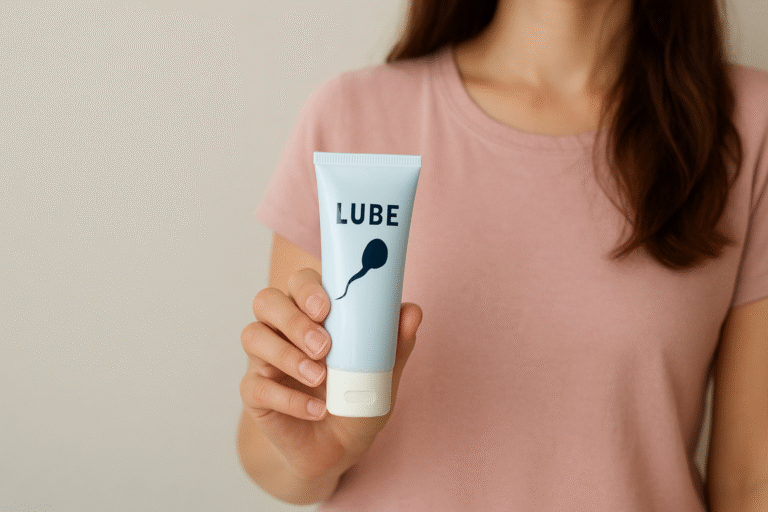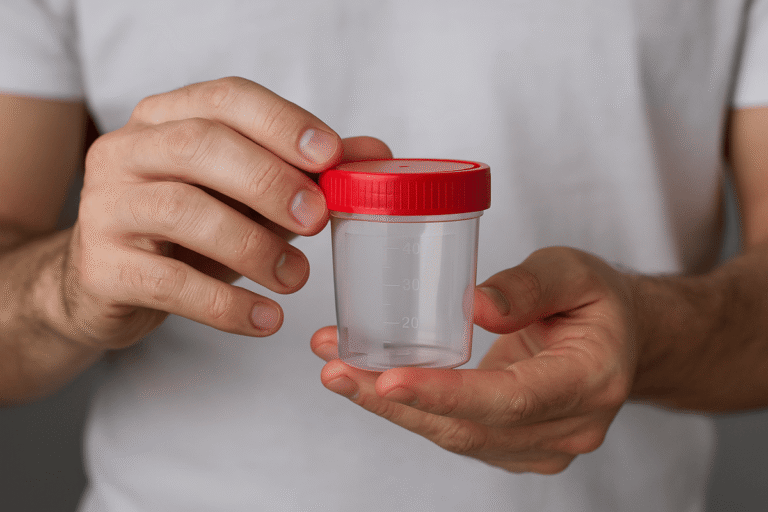A healthy vaginal pH balance is the most important part of vaginal health. It should be between 3.8 to 4.5, which is a mildly acidic range. Lactobacilli, a type of beneficial bacteria, make lactic acid and hydrogen peroxide, which keep this acidity in check. This is a natural way to protect against diseases like bacterial vaginosis (BV) and yeast infections. When this delicate balance of pH in the vagina is upset, it becomes more alkaline (pH > 4.5), which lets hazardous germs grow.
Antibiotics, changes in hormones, douching, semen (pH ~7.4), and synthetic hygiene products are all things that can cause this. Unusual discharge, itching, burning, fishy smells, and infections that keep coming back are all signs of an imbalance. Restoring the pH balance of the vagina is not just about getting rid of symptoms; it’s also about keeping the vaginal flora healthy. Below, we provide seven natural, science-based ways to get your sexual health back on track.
1. Probiotic Supplements: Replenish Beneficial Bacteria
Probiotic pills immediately restore the pH equilibrium of the vagina by adding back Lactobacilli strains such as L. rhamnosus, L. reuteri, and L. crispatus. These bacteria make lactic acid, which lowers the pH of the vagina to its acidic state, which protects it. Clinical studies show that taking probiotics by mouth lowers the chance of getting BV again by 88% and yeast infections by 75%.
How to Use
Choose vaginal-specific probiotic supplements that have at least 10 billion CFUs (colony-forming units) every day. To make sure that germs survive stomach acid, look for capsules that release their contents slowly. For sudden imbalances, use oral probiotics along with vaginal suppositories to get the probiotics to the right place. Taking the same thing every day for 8 to 12 weeks is very important to restore microbial colonies.
Important Things to Think About
Don’t take probiotics that have extra ingredients that aren’t needed. If you have a weak immune system, talk to your OB-GYN. Combine with prebiotic fiber (such oats or bananas) to help bacteria flourish.
Also Read: Learn About Fibroids And Their Natural Solution
2. Fermented Foods: Nature’s Probiotic Powerhouses
Fermented foods are full of live Lactobacilli strains that dwell in the gut and vaginal system. Regular use makes the vagina more acidic, which pushes away germs that cause pH abnormalities.
Top Choices
- Yogurt or kefir without sugar: Full of L. acidophilus. usage it every day or put it on your skin (only for external usage).
- Kimchi/Sauerkraut: Fermented vegetables increase the number of different types of microbes.
- Kombucha: Raw, low-sugar kinds have probiotics and antioxidants.
Practical Integration
Eat one to two servings per day. Don’t eat pasteurized foods (heat kills microorganisms). Fermentation at home makes sure the most potency. Fermented foods are a good addition to probiotic supplements for very bad imbalances, but they are not a substitute for them.
3. Boric Acid Suppositories: The pH Reset Button
Boric acid is a mild acid that quickly brings the pH of the vagina back to normal, which is between 3.8 and 4.5. Its antifungal and antibacterial capabilities stop biofilms from forming in BV and yeast infections. When antifungals don’t work, studies show that 70–90% of the time, they work for those who have them again.
How to Use
Put a 600mg pharmaceutical-grade boric acid suppository in your vagina at night for 7 to 14 days. Use during your period or when taking antibiotics. Never eat it.
Safety and Precautions
Not for women who are pregnant or nursing. Some minor side effects are runny discharge or discomfort. Take with probiotics to stop imbalances from coming back. There are prescription choices, but you can also get over-the-counter suppositories.
4. Garlic Tablets: A Friend Against Fungi and Bacteria
Allicin, the key ingredient in garlic, fights bacteria that cause BV and Candida, such as Gardnerella. It boosts the immune system and keeps the pH of the vagina stable without harming good bacteria.
How to Use
For 2–3 weeks, take enteric-coated garlic tablets that don’t smell (1,000–5,000mg allicin daily). Don’t put raw garlic in your vagina because it could burn or irritate you.
Evidence and Warnings
A study from 2020 found that garlic extract got rid of 85% of yeast infections. Not safe for people who take blood thinners. Use standardized extracts to get the same dose every time.
5. Mindful Hygiene Practices: Protect Your Microbiome
Harsh hygiene throws off the pH balance in the vagina by killing off protecting bacteria. You can stop problems from happening again by making little changes.
Steps You Can Take
- Cleansing: Use washes that are pH-balanced (pH 3.5–4.5) and don’t have any scents on the outside. Don’t douche; it washes away Lactobacilli.
- Taking care of your period: Change your pads or tampons every four hours. Choose goods made of organic cotton.
- After sex or going to the bathroom, pee and wipe from front to back. After swimming, wash your vulva.
Avoid
Don’t use scented wipes, deodorants, or bubble baths. Their chemicals and alkalis cause pH rises.
6. Breathable Fabrics: Engineering an Unfriendly Environment for Pathogens
Non-breathable fabrics (nylon, polyester) trap heat/moisture, raising vulvar skin temperature and pH. This encourages anaerobic pathogen growth. Cotton’s moisture-wicking properties reduce humidity by 50%, per Textile Research Journal, maintaining an acidic microclimate.
Optimal Clothing Strategies
- Underwear: 100% cotton, moisture-wicking brands (Cottonique, Hanky Panky). Change daily.
- Bottoms: Loose-fitting linen/trousers; avoid skinny jeans for >4 hours.
- Sleep: Go commando to promote air circulation.
- Activewear: Change immediately post-workout; choose cotton-lined options.
Maintenance Tips
Wash underwear in fragrance-free detergent; replace every 6 months. Avoid fabric softeners—residues irritate tissues.
7. Hydration & pH-Balanced Diet: Systemic Support
Dehydration concentrates urine and vaginal secretions, irritating tissues and elevating pH. Adequate hydration dilutes irritants and supports mucosal health. A 2018 Urogynaecology study linked high water intake (>2.5L/day) to 40% lower UTI/BV recurrence.
Dietary Adjustments for pH Stability
- Eat: Cranberries (proanthocyanidins block bacterial adhesion), leafy greens (alkalinize blood), vitamin C-rich foods (boost immunity).
- Avoid: Refined sugar (feeds yeast), alcohol (dehydrates, disrupts flora), and processed foods (pro-inflammatory).
- Supplements: Omega-3s (1,000mg/day) reduce inflammation; vitamin D (2,000 IU/day) regulates immune response.
Sample Daily Meal Plan for pH Balance
- Breakfast: Unsweetened kefir smoothie + berries
- Lunch: Kimchi-topped salad with salmon
- Dinner: Tempeh stir-fry with broccoli
- Snacks: Garlic hummus, cranberry nuts
In conclusion: Take charge of your journey to a healthy vaginal pH balance
To get the pH balance of the vagina back to normal, you need to take a whole-body approach. Probiotic supplements and fermented foods help rebuild good bacteria, while boric acid and garlic tablets help with acute imbalances. Wearing breathable fabrics and being careful about hygiene will help keep the balance from happening again. Drinking enough water and eating a healthy diet can also help your overall health.
Keep an eye on things like changes in discharge or odor to discover imbalances early. These natural methods work quite well, but if you have ongoing problems, see a doctor. You may need help with underlying diseases like STIs or diabetes. Keep in mind that vaginal pH balance isn’t about being flawless; it’s about being strong. You invest in your long-term intimate health by using all seven approaches together and letting your body do what it knows how to do best.





[…] Also read: 7 Natural Ways to Restore Vaginal pH Balance […]
[…] Also Read: Naturally Restore Vaginal PH […]